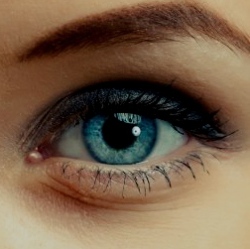
A team of engineers at the University of California San Diego and La Jolla-based startup Nanovision Biosciences Inc. have developed the first nanoengineered retinal prosthesis, a step closer to restoring the ability of neurons in the retina to respond to light.
The technology could help tens of millions of people worldwide suffering from neurodegenerative diseases that affect eyesight, including macular degeneration, retinitis pigmentosa, and loss of vision due to diabetes.
Despite advances in the development of retinal prostheses over the past two decades, the performance of devices currently on the market to help the blind regain functional vision is still severely limited, well under the acuity threshold of 20/200 that defines legal blindness.
The new prosthesis relies on two new technologies: implanted arrays of photosensitive nanowires and a wireless power/data system.
The new prosthesis uses arrays of nanowires that simultaneously sense light and electrically stimulate the retina. The nanowires provide higher resolution than anything achieved by other devices — closer to the dense spacing of photoreceptors in the human retina, according to the researchers.*
Existing retinal prostheses require a vision sensor (such as a camera) outside of the eye to capture a visual scene and then transform it into signals to sequentially stimulate retinal neurons (in a matrix). Instead, the silicon nanowires mimic the retina’s light-sensing cones and rods to directly stimulate retinal cells. The nanowires are bundled into a grid of electrodes, directly activated by light.
This direct, local translation of incident light into electrical stimulation makes for a much simpler — and scalable — architecture for a prosthesis, according to the researchers.
